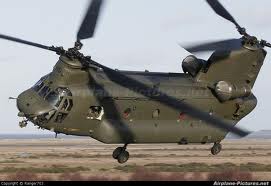
A team is defined as a group of people working interdevided guiding for leaders to take appropriate actions to achieve team effectiveness.
The actions are clear, elevating goal which team goals must be very clear so that one can tell whether the performance objective has be realized; results-driven structure where teams need to find the best structure for accomplishing their goals; competent team members, groups should be composed of the right number and mix of members to accomplish all the tasks of the group; unified commitment, a common mistake is to call a work group a team but treat it as a collection of individuals, teams do not just happen: They are carefully designed and developed; collaborative climate, the ability of a team to collaborate is essential to team effectiveness; standards of excellence, effective group norms are important for group functioning; external support and recognition, a supportive organizational context includes material resources, rewards for excellent performance, and so on; finally principled leadership, team leaders should serve as coaches. (Northouse, 2013)
In order to focus more specifically on each one of the actions that Northouse proposed, I have a great experience of teamwork that can illustrate the actions one by one. My freshman year of college I participated in a Supply Chain Management case study with Boeing Company along with three of my other friends. We finally got the second place on the case competition. We had a clear, elevating goal. The goal that we all agree on was to finish the case and meet the requirements of the scenario which were keep a 15% profit and deliver the Chinook aircrafts within four years. We had a result-driven structure where each team member had autonomy. Everyone spoke up of one’s idea to contribute to the case and we set the deadlines for ourselves in order to finish the parts we were assigned to. Since we decided to look at the case from three aspects which were labor cost, supplier evaluation and parts ordering frame we had competent of people (4 of us) needed with one person to sum up our discussion. We had unified commitment where people in our team are best friends to begin with. We communicate and help with each other. Also, the collaborative climate was great and everyone was being trusted since we are friends. The standards of excellence was met because no one wants to let our friends down. The rewards of $1,000 for the first place, $600 for the second place and $400 for the third place served as the external support and recognition. Finally, the team leader in our team was a sophomore who is a year older than the rest of us who served as coach during the case competition.
Each one of the action is very important. Fail to complete one of them could result in team ineffectiveness. For example, the second year we participated in the case with same teammates and everything else was almost the same as the first year; however, there were failures on result-driven structure and collaborative climate, we did not place anything.
To sum up, the actions on team effectiveness Northouse emphasized on is very important to follow if the leader want to improve team effectiveness and to complete a higher achievement.
References
Northouse, P.G. (2013). Leadership: Theory and Practice. Los Angeles: Sage Publications.
